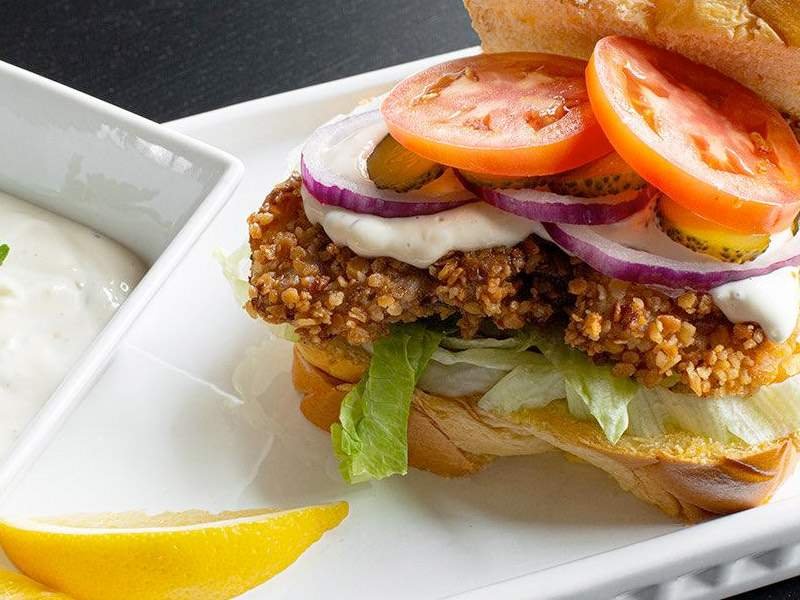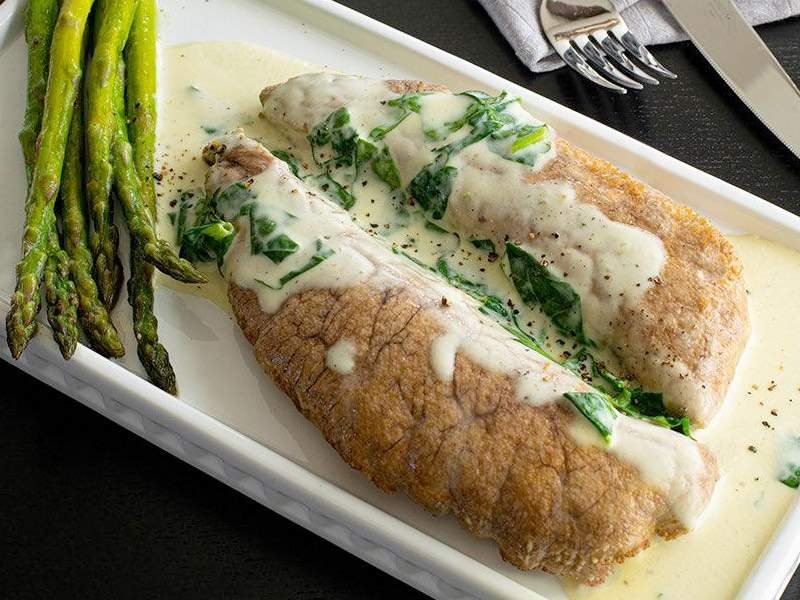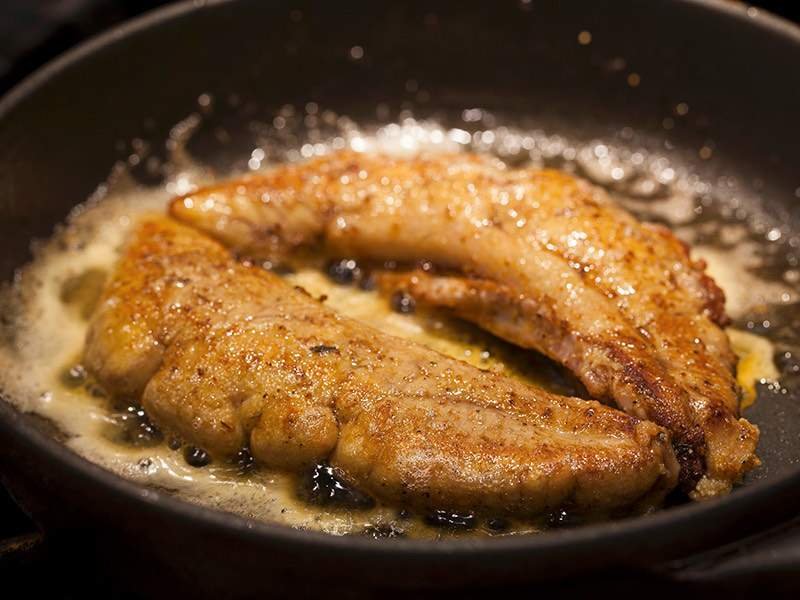Your Essential Guide to Shad

Shad, a great eating fish, a fish with a lot of history, a truly American fish. While there are many kinds of shad in the world, the species Alosa sapidissima is found only here in the USA. In fact, it has been called “The Founding Fish” because, besides being a part of the Native American diet, it sustained the early settlers, and barrels of salted shad saved Washington’s troops from starvation during the Revolutionary War. Pulitzer award winning author John McPhee paid homage to this truly one of a kind fish in his book “The Founding Fish.”
Sit back with Robert DiGregorgio, FultonFishMarket.com’s Head of Quality Control, as he explains all about this historical fish.
What is Shad?
Alosa sapidissima, also known as American Shad, is the largest member of the herring family. Like salmon, shad are anadromous, spending most of their lives at sea. When they reach a certain size and age (usually 3-7 years old), and the water temperature is around 50-55℉, the mood strikes and shad return to the freshwater rivers of their birth to spawn. These “shad runs” back to their native rivers usually begin in January in the St. John’s River in Florida, and proceed, south to north, all the way up to the Gulf of St. Lawrence in Canada, ending sometime in June.
A unique feature of shad is its crazy bone structure! It’s not just a normal rack, they have these “floating ribs,” another row of bones on each side of the fillet making it very difficult to bone. Until you know where they are and develop a “feel” for them with the knife, you’re just going to end up with sliced and diced shad… with bones.
Fun Fact: At one time, how to bone shad was the most guarded secret in the Fulton Fish Market!
Filleting a shad is a skill that comes only after many fish have been sacrificed for your shad boning education. At the market, fish cutters who acquired the skill of boning shad wouldn’t even let you watch! Their thinking was if they show you, and you show a couple of guys, before you know it there’s less money for them. I only learned because I worked on the table right next to the best shad boner I ever saw, John Cioffi. I would peek over when I could and watch. After work I would find a few fish and practice. The next day I would do the same thing; look a little, practice a little. It took a few seasons but was finally allowed to bone shad next to John. It felt like I made the NY Yankees!
When is Shad Season?
Shad season is short is very short. Shad season typically starts in mid-February and runs through May or June. We like to think of shad season as the harbinger of spring, so when shad season is upon us, we can look forward to warmer days ahead.
What Does Shad Taste Like?
Shad is delicious; rich and fatty, with a silky texture. Even the name, Alosa sapidissima, means “most delicious”! So delicious, that the first shad of the season was highly prized, and there was a great rivalry among the most elegant restaurants as to which one would have the first shad of the season.
It seems this custom goes way back to when George Washington was president and the US capital was New York City. Samuel Fraunces, who owned “Fraunces Tavern”, was Washington’s head of household, and he was always looking for something special for the President’s table. In the market one day, he spied a big, beautiful shad, the first of the season! He quickly purchased it, brought it back and prepared it for the President’s breakfast. The President sits down and says something like, “That looks good, Sam. What is it?” Fraunces replied, “A fine shad, sir. The first of the season.” President Washington quickly responded, “First of the season you say? How much did you pay for it?” When Fraunces told him he spent two dollars on it, the President would have none of it. “TWO DOLLARS?! Take it away! I will not touch it! I can never encourage this extravagance at my table!” President Washington was, shall we say, a frugal man. The shad was accordingly removed and Fraunces, who had no such economical scruples, had himself a fine meal.
What is Shad Roe?
Besides the rich, succulent meat, the shad has another prize… beautiful shad roe. What is shad roe you may ask? Shad roe is the egg sac of the female shad filled with thousands of eggs. Shad caviar, if you will. Shad roe is delicate to cook but worth it for the luxurious taste - akin to herring and foie gras. There is nothing else quite like it. Out of all the roe in the fish business, with the possible exception of caviar to some minds, shad roe is considered the most delicious. Because of the roe, female shad, or roe shad, are much more valuable than the males, known as buck shad (not to mention the buck shad are a lot smaller thus they yield less meat).
When working with shad, another thing to be careful about is removing the roe without nicking the sac. Chefs are very particular about this since cut shad roe sacs tend to splatter all over when being cooked. It’s easy to not nick the sac if done slowly and you take your time. However, where I worked at that time, we might sell up to 1,000 pairs of shad roe in a single night, so you couldn’t make each fish a project. All that roe plus several hundred pounds of boned shad a day and you can get an idea how important this fish was. A lot of work to do right, but definitely worth it.
Is Shad Sustainable?
Thankfully Mother Nature is forgiving and, given the chance, shad can and are making a comeback. While the Hudson River is still off limits, very regulated shad fisheries are beginning to rebound.
Today the shad is a Federal Trust fish. This means that the federal government has some responsibility for its restoration of the species. It is protected under the Anadromous Fish Conservation Act and restoration efforts are underway from Maine to Virginia. Management practices facilitating this restoration process include conservation stocking and habitat restoration, along with the removal of stream and river barriers and the building of fish passage facilities.
At one point in time here in the northeast, the annual spring shad run was one of the most anticipated times of the year. They were so abundant, great shad festivals were held in towns all along the Delaware, Hudson, and Connecticut Rivers, to name a few. The shad run was not just of economic importance to the community but was a social and cultural event as well. They were wonderful harbingers of Spring, full of hope and promise after a long dismal winter.
Shad fish was sent to NYC as soon as it was available. They appear in the Hudson River around the middle of April, when the shadbush begins to flower, and these were, in my opinion, the best shad in the world. Large, fat fish so fresh they were hard to cut. We often let them sit a day before we worked on them.
Unfortunately, the days of abundant shad are, for now anyway, a thing of the past. There are several reasons for this.
At one time, there was such a thing called “the intercept fishery,” whereby shad was caught still in the ocean as they approached the mouth of the river. Millions of shad were taken this way, and the result was the removal of huge amounts of shad before they had a chance to spawn. If they did get into the river system, there were other challenges to survival.
In the Hudson River, predators like striped bass, whose own fishing is so regulated and restricted as to have little or no impact on their population, feast with impunity on juvenile shad. In addition to predators, power plants upriver were allowed to use river water to cool off their machinery, sucking in millions of shad fry (tiny baby shad) and eggs, killing them.
Another problem for Hudson River shad are zebra mussels. These invasive mollusks showed up in the Great Lakes during the 1980s, dumped there in the ballast of some European freighter. By the 1990s, the zebra mussels were in the Hudson. The mussels themselves don’t prey on shad, but they are filter feeders, thus straining the water of tons of plankton which is exactly what growing shad feed on. There are so many zebra mussels now that they can filter the entire freshwater portion of the Hudson River in 2-4 days! Before the invasion, native mussels took 2-3 months to do the same. By some estimates, in the Hudson River, plankton as a food source for shad has dropped by 75%.
Dams are another huge factor affecting shad populations. There are thousands of dams built on the home rivers of shad all along the Eastern seaboard. These dams prevent shad from migrating upriver to their natural spawning grounds, and in some cases, migration may be delayed, or stopped completely. The quality, quantity and accessibility to their habitat may be adversely altered forever. All of these factors, and more, have effectively reduced shad populations to dangerously low levels.
An interesting shad side note….In 1871 Seth Green of Caledonia, NY was a pioneer in fish culture. At the invitation of the government of California, he took 10,000 shad fry packed in milk cans aboard the newly finished Trans-Continental Railroad and transplanted them to the Sacramento River. Since then shad have spread far and wide, to other rivers and to other states. There may now be more shad on the west coast than there is on the east coast!
However, shad never gained the popularity in California as it had in the East. In 1957, when shad nets started catching salmon as well as shad, the state government decided to end commercial shad fishing in an effort to protect its favorite fish, the salmon. Let’s face it, salmon has a much larger following out there. It’s tied to their cultural and economic life much the same as shad is (was) here. Not to mention salmon are much easier to fillet than shad.
Is Shad Healthy to Eat?
Shad are some of the best fish I ever ate and it’s also very healthy for you. This is a fish rich in fatty Omega 3s and a great source of protein. Shad are also plentiful in B vitamins, vitamin A, phosphorus, potassium, selenium, zinc, etc., etc. The health benefits of eating shad are quite extensive. Eating just two servings of fatty fish, like shad, a week can reduce your risk of dying from heart disease by 36%!
When you have the chance, I strongly encourage everyone to try Shad and Shad Roe. It’s not just another fish. It’s a piece of local custom, folklore, a bit of American history, and a springtime tradition. Once you try it, you’ll know what all the fuss is about.
American Shad Recipes
When shad is in season, we can’t get enough of its sweet, rich flavor. While shad fillets are very bony, get deboned shad fillets, so all you have to do is choose your favorite way of cooking shad. Try them crumbed in seasoned breadcrumbs and baked for an easy seafood dinner.
We love a crispy fish sandwich, and now that shad is in season, we couldn’t help but take sweet, flaky shad fillets, batter and fry them and see how they would work in a sammie. Turns out, fried shad sandwiches are fried-and-true delicious! We serve ours in soft potato or brioche buns with a punchy homemade tartare sauce.
Shad Roe Recipes
Butter-Poached Shad Roe Recipe with Spinach Cream Sauce
Shad season is short and sweet, and while most of the time we like to keep shad recipes simple, there’s no better way to celebrate this spectacular fish than with a decadent dinner. We poach luxurious shad roe in butter, then gild the lily by finishing it with a silky, spinach cream sauce. A real treat for shad lovers new and old.
Get it while you can! Enjoy the short shad season with this easy and quick pan fried shad roe recipe.




